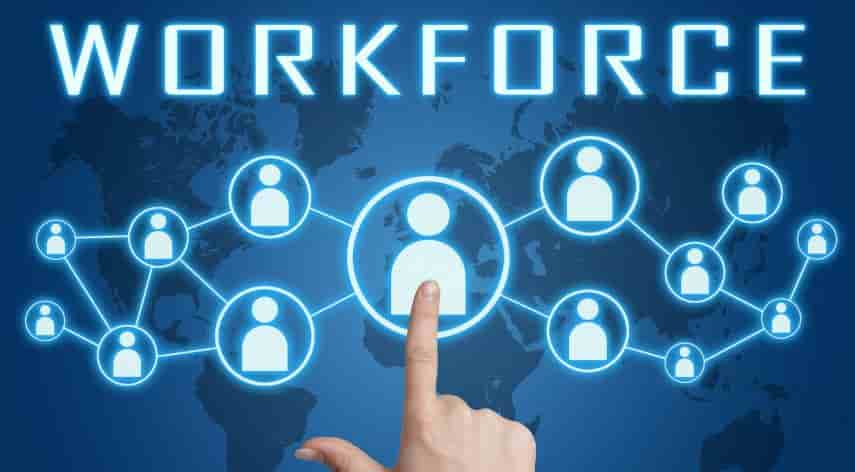How does Industry Protect its Workforce?

In the world of industry, regardless of the specific sector of operations, worker safety remains a priority. There is a need for all employers to ensure that all reasonable steps are taken to protect the workforce and to prevent accidents and industrial injuries from occurring wherever possible. Put simply, a safe workplace benefits both the workforce and the business owner. Consider that industrial injuries that are found to be the result of unsafe practices in the workplace can lead to claims and litigation being made against the company. In turn, this can result in significant compensation being paid out if the employer is found to be negligent in protecting the workforce from avoidable harm. In this article, three distinct ways in which a range of industries protect their workforce will be explored in detail. This includes a description of some of the latest technologies that are employed to create a safe workplace for all workers.
Table of Contents
ToggleThe use of air scrubbers
Air scrubbers are commonly used across a range of industries to ensure that the air quality remains safe for employees. One example of the use of air scrubbers is in industries that specialize in undertaking restoration work. They are an essential piece of technology in fire-damaged buildings, underground sewerage systems, or any working environment with poor air quality. They work by removing harmful particulates and any traces of poor odors in the air. Many firms use air scrubbers in Australia to safely improve air quality at construction sites, restoration projects, or for underground work. They can dramatically improve the air quality in challenging working environments and are therefore considered to be vital for allowing safe working practices to take place across the industry.
Drone technology
In 2023, drone technology is becoming increasingly utilized across a range of industries to allow workers to be protected from unsafe environments. For example, drones may be deployed in factories that use hazardous materials or chemicals to assess the extent of any damage after spills or breakages. This allows workers to operate the drones from a safe distance without being directly exposed to the chemicals or hazardous materials. They are also being used increasingly to allow inspections of industrial premises to take place without employees needing to work at height or in a dangerous environment. You can see more examples of how drone technology is improving worker safety in the industry here.
Incident reporting
A comprehensive incident reporting system is commonly used as a final key example of safeguarding workforces in the industry. If an adverse incident or near miss takes place in the workplace, an incident report form will be completed by the employee or safety representative. This information is then held in an incident database, where it can be accessed to allow a suitable level of investigation to take place based on the incident itself. Risk assessments may take place if there is an ongoing risk posed by an industrial operation or in a specific part of the factory, and suitable remedial actions will be taken to minimize the risks of a similar reoccurrence. A business can also understand the common risks posed to it by creating incident reports highlighting a range of recent incidents or those with a specific theme. In short, incident reporting is recognized to be one of the most effective ways to ensure worker safety and take steps to stop unsafe practices from occurring.
Mike Farrier possesses over 18 years of hands-on experience in software and web development, SEO, social media marketing, eCommerce, and digital marketing. He has been active in the online domain since 2019, serving as a seasoned SEO and digital marketing consultant.
Recommended For You
Spread the loveBathroom Wallpaper The Bathrooms- our home’s most fun-functional space often goes unnoticed while designing the house. However, this
Spread the loveWhen it comes to understanding temperature, Celsius and Fahrenheit are the two most commonly used scales around the world. The Celsius scale is primarily used in most countries, while the Fahrenheit scale is popular in the United States. If you’ve ever come across a temperature given in Celsius and wondered how it translates to Fahrenheit, you’re in the right place. This article will guide you through the process of converting 19 degrees Celsius to Fahrenheit, using simple formulas and steps. The Celsius Scale The Celsius scale, also known as the centigrade scale, is a metric system temperature scale based on the freezing and boiling points of water. On this scale, water freezes at 0 degrees Celsius and boils at 100 degrees Celsius under standard atmospheric conditions. This scale is widely used in scientific contexts and by most of the world for everyday temperature measurements. The Fahrenheit Scale The Fahrenheit scale, on the other hand, was developed by Daniel Gabriel Fahrenheit in the early 18th century. In this scale, the freezing point of water is 32 degrees Fahrenheit, and the boiling point is 212 degrees Fahrenheit. This scale is still commonly used in the United States for weather forecasts and some cooking measurements. The Formula for Conversion Converting temperatures between Celsius and Fahrenheit involves a specific formula. The formula to convert from Celsius to Fahrenheit is: [ \text{F} = \left( \text{C} \times \frac{9}{5} \right) + 32 ] Where: ( \text{F} ) represents the temperature in Fahrenheit ( \text{C} ) represents the temperature in Celsius By using this formula, you can easily convert any temperature from Celsius to Fahrenheit. Step-by-Step Conversion of 19 Degrees Celsius to Fahrenheit Let’s walk through the process of converting 19 degrees Celsius to Fahrenheit using the formula mentioned above. Step 1: Multiply by 9 First, take the temperature in Celsius (19 degrees) and multiply it by 9. [ 19 \times 9 = 171 ] Step 2: Divide by 5
Spread the loveIn the bustling streets of London, where competition is fierce and opportunities are abundant, businesses need every edge



